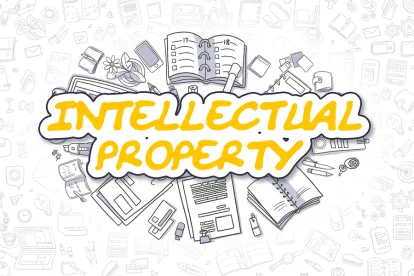Beginning October 1, several key changes to the EU trademark regime will come into effect.
Removal of "Graphical Representation" Requirement
Arguably of most significance is the elimination of the graphical representation requirement for EU trademarks. From October 1, trademark applications will not have to be represented in a graphical format. This means that non-visual marks may be easier to file. For example, sound marks can be filed in MP3 format, and a motion trademark (i.e., a moving image without sound) or multimedia trademark (i.e., a combined image and sound) can be filed in MP4 format. This should greatly simplify the application process, where less musical notation will be required in applications, and sonograms will no longer be permitted.
When registering a figurative mark with the European Union Intellectual Property Office (EUIPO) , applicants will no longer be able to provide a description (e.g., color(s)). Instead, the application must use a JPEG format, which may incorporate colors. Both single and combination color marks will be required to refer to a generally recognized color code, such as Pantone.
The abolition of the graphical representation requirement forms part of a move towards what the EUIPO has termed a what you see is what you get system. However, although a wide non-exhaustive list of types of trademarks is provided by the EUIPO (i.e., word; figurative; shape; position; pattern; color (single or combination); sound; motion; multimedia and hologram), existing obstacles in registering trademarks based on smell or taste are likely to persist for the time being.
Introduction of a Certification Mark at EU Level
A certification mark demonstrates that the goods and/or services on which it appears satisfies the certifying body's regulations of use. The UK already recognizes certification marks as a discrete category of trademarks, subject to differing requirements for registration. Examples registered in the UK include the Fair Trade logo and the British Standards Institution's Kitemark.
Starting October 1, certification marks will also be registrable with the EUIPO. For €1,500, certifying bodies operating in multiple EU member states will be able to apply online for an EU-wide certification mark. Applicants will need to file the regulations of use in relation to the mark within two months of the application. EU certification marks cannot be used for the purpose of distinguishing goods or services with respect to geographical origin, and owners of businesses involving the supply of the goods/services to be certified by a mark cannot own that mark.
Procedural Changes
A number of procedural changes will also apply beginning October 1; some of the most notable are:
-
Priority—Priority claims must be filed together with the relevant EU trademark application (currently, priority claims may be made with the trademark application to follow).
-
Acquired distinctiveness as a subsidiary claim—Applicants can choose whether to pursue acquired distinctiveness as a subsidiary or alternative claim (currently, it can only form an alternative claim). This will delay substantial expense by the applicant in gathering and presenting evidence of use until having exhausted its right of appeal regarding inherent distinctiveness.
-
Online substantiation—Opponents or cancellation applicants may provide evidence relating to earlier rights that are registered by referring to online sources recognized by the EUIPO. These recognized sources include all EU national and regional IP offices.
The incoming changes represent a varied approach from the EUIPO: on the one hand, some simply assimilate features of member states into the EU scheme (e.g., the introduction of the certification mark), while others are illustrative of the unique challenges it faces as an international body (e.g., simplifying translation processes and the exclusion of geographical origin in relation to certification marks).




 />i
/>i

